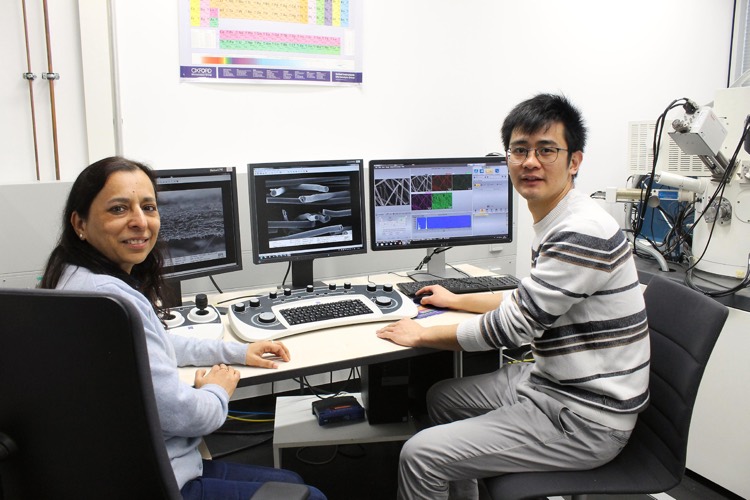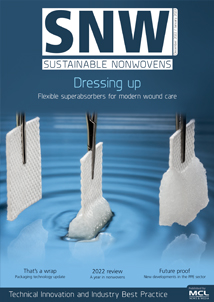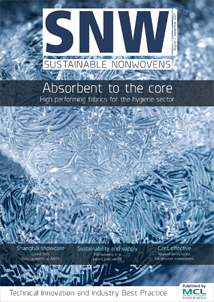BAYREUTH – New electrospun nonwovens exhibiting an unusual combination of high electrical conductivity and extremely low thermal conductivity have been developed in Germany.
They represent a breakthrough in materials research since it has been possible to decouple electrical and thermal conductivity based on a simple-to-implement material concept. The nonwovens are made of carbon and silicon-based ceramic via the electrospinning process and are attractive for technological applications, such as in energy technology and electronics. They can be manufactured and processed cost-effectively on an industrial scale.
Normally, high electrical conductivity is associated with high thermal conductivity, and low thermal conductivity goes with low electrical conductivity. However, in many high-tech industries, there is growing interest in multifunctional materials that combine good electric with low thermal transport. Though several strategies for achieving this have been developed – such as dense inorganic materials, conjugated polymers and alloys – it is still a major challenge in flexible, foldable materials.
Sea-island fibres
Researchers at University of Bayreuth have developed the new nonwovens using fibres with a sea-island type nanostructure, with a diameter between 500 and 600 nanometres. Every fibre contains a matrix of carbon in which nano-sized ceramic phases are homogeneously distributed. The particles form tiny ‘islands’ in the ‘sea’ of carbon matrix and have opposite, complementary effects. The carbon matrix enables the electron transport in the fibres for high electrical conductivity, while the nano-sized silicon-based ceramic prevents thermal energy from spreading just as easily. This is because the interface between the ceramic and the carbon matrix is very high, while the pores of the nonwoven are very small. As a result, there is a strong scattering of phonons – the smallest physical units of vibrations triggered by thermal energy – and a continuous directed heat flow does not occur.

The new nonwovens have been compared against more than 3,900 other materials of all types – including ceramics, carbons, natural materials, synthetic polymers, metals, glasses and various composites – and found to be superior in coupling the two required properties.
“Our electrospun nonwovens combine highly attractive multifunctional properties that are usually distributed among different classes of materials – high electrical conductivity, thermal insulation familiar from polymer foams, and non-flammability and heat resistance characteristic of ceramics,” said Dr Xiaojian Liao, a postdoctoral researcher in macromolecular chemistry who jointly led the project with Dr Seema Agarwal. “The fibres are based on a simple material concept and they were made from commercial polymers. We are convinced that they are suitable for several application areas in the fields of energy management, battery-powered electromobility, smart textiles and aerospace.
Bayreuth scientists from different research centres collaborated in the development of the new nonwovens and the necessary preliminary studies, including the Bavarian Polymer Institute (BPI), the Bayreuth Centre for Colloids and Interfaces (BZKG), the Bavarian Research Institute of Experimental Geochemistry and Geophysics (BGI), and the Bavarian Centre for Battery Technology (BayBatt). The research has been published in Science Advances.
































































































